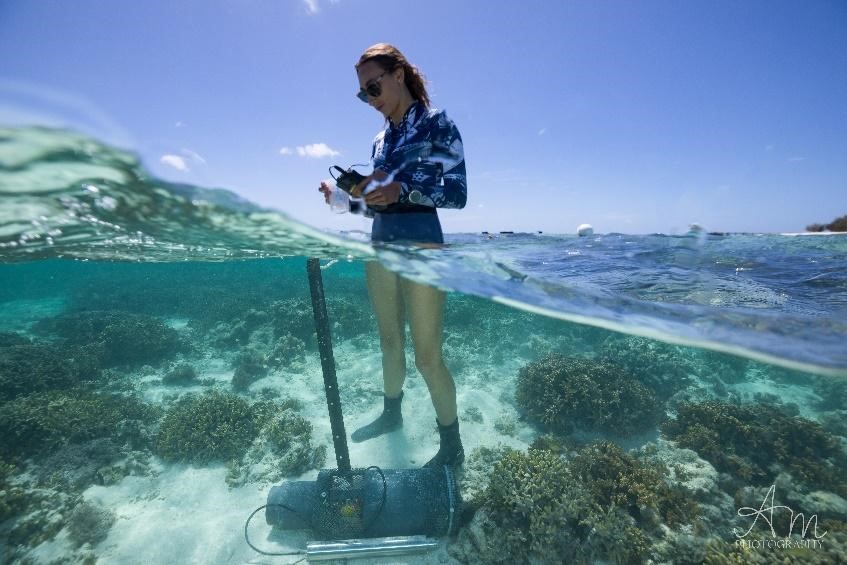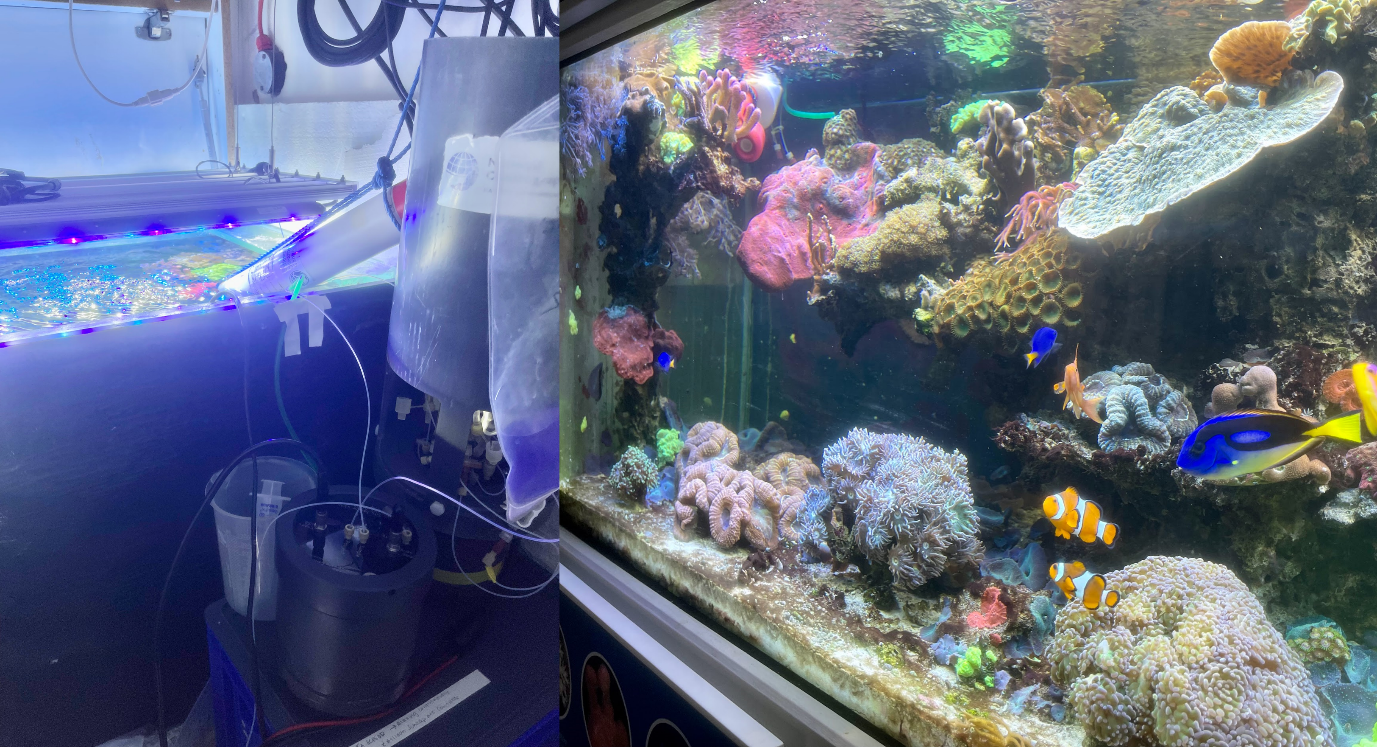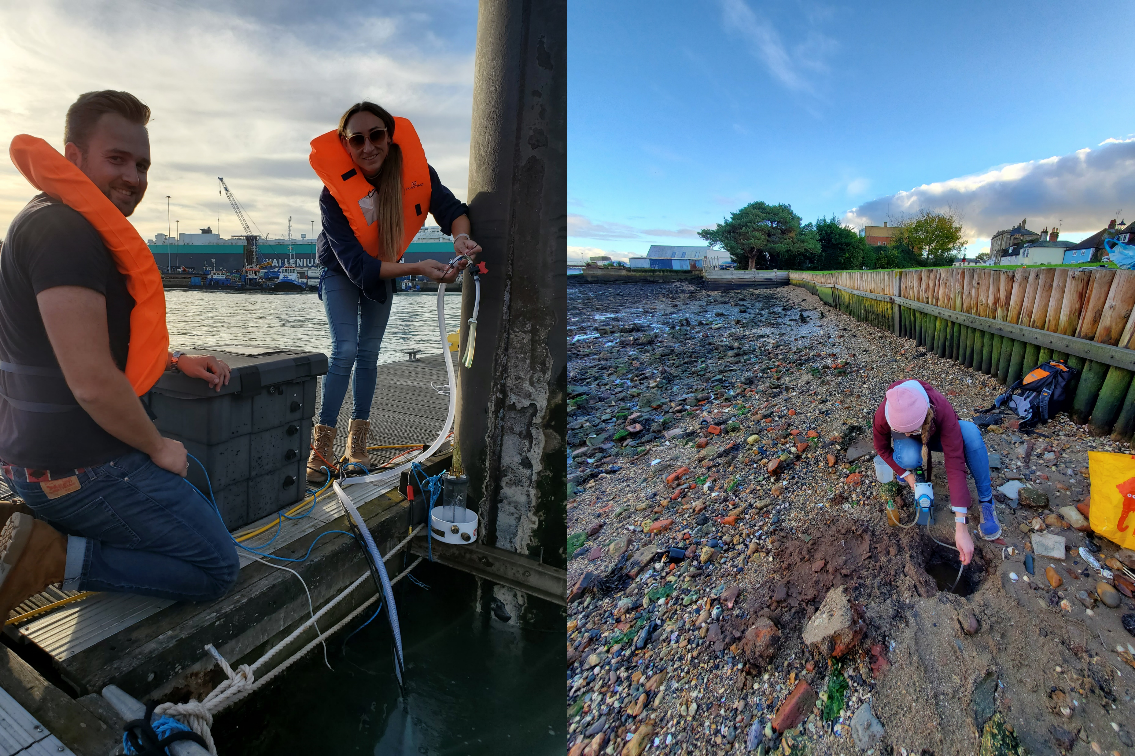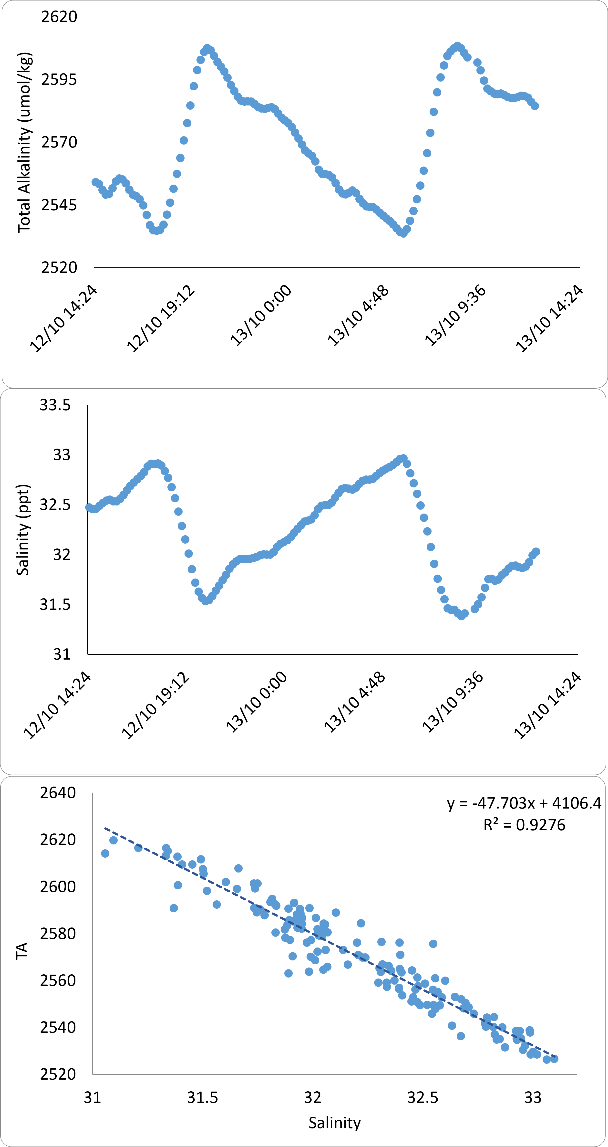Hi, my name is Dr Kay Davis. I’m a Marine Biogeochemist working in collaboration with the National Oceanography Centre, and I was grateful to be awarded a CLASS fellowship in 2022.
I applied for the CLASS fellowship during my Post-Doc at the Leibniz Institute of Tropical Marine Research in Bremen, Germany to continue with previous work undertaken on the Great Barrier Reef during my PhD. This work investigated how we can use autonomous sensors developed by the Ocean Technology and Engineering team at NOC to measure the metabolism of coral reefs.
We used the novel Total Alkalinity Sensor (TAS) to determine changes in total alkalinity (TA) over a two-week period at Heron Island in 2020 (Figure 1). As corals grow, they take up TA to create their calcium carbonate skeleton. These water samples previously had to be taken manually and analysed separately in the laboratory. Using the sensor, we could get a higher quantity and quality of samples that potentially provide a more comprehensive overview of ecosystem functioning. As coral reefs and other nearshore systems battle with the effects of climate change, being able to measure their responses at a high resolution will answer key questions about their health status.

During my CLASS Fellowship, we wanted to refine our methodology for coral reef ecosystem metabolism estimates, so we undertook an experiment in the coral aquarium at the NOC, where we utilized NOC TAS and pH sensors to understand fine-scale changes in pH and TA as a measure of algal and coral photosynthesis and calcification as a function of solute enhancement. This was wildly successful, and we were all very excited to see how the sensors responded immediately to both manual additions of TA and associated responsive altered ecosystem uptake rates (Figure 2).

We also wanted to see how we could utilize other sensors and in other systems to measure different processes relevant to different regions. For this, we paired biogeochemical sensors (NOC’s TAS, CTDs, pH sensors) with a RAD-7 to determine submarine groundwater fluxes of freshwater and dissolved carbon to the Southampton estuary. As this region has chalk aquifers, we hypothesized that groundwater was driving alkalization of the estuarine surface waters, potentially providing natural enhancement of carbon dioxide drawdown from the atmosphere. We took groundwater and surface water samples to test this hypothesis (Figure 3). We saw massive changes in surface water alkalinity and salinity profiles throughout the tidal cycles, which were successfully measured by our sensors at a rate > 6 x higher than current published studies (Figure 4).

Overall, this Fellowship was incredibly useful to collaborate in person with the team I had been working with remotely for years, and provided higher resolution and better quality data than has ever been able to be produced in these scientific fields. It was a great experience working at NOC and our collaboration has since been successful in promoting coastal monitoring with other organizations around the world.

Dr Kay Davis is a Marine Biogeochemist with the Australian Institute of Marine Science. Keep up with her research on her website or on Twitter.